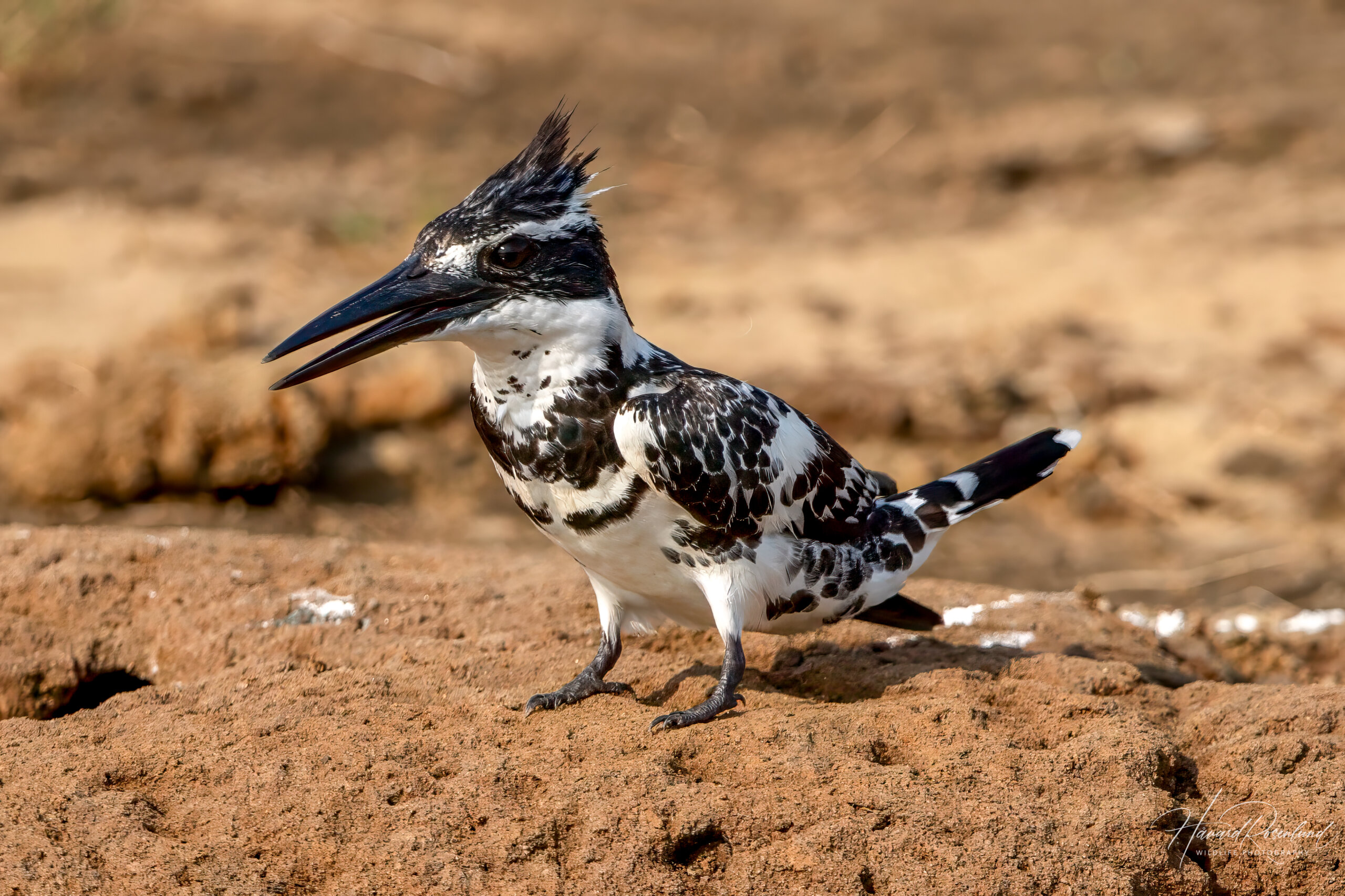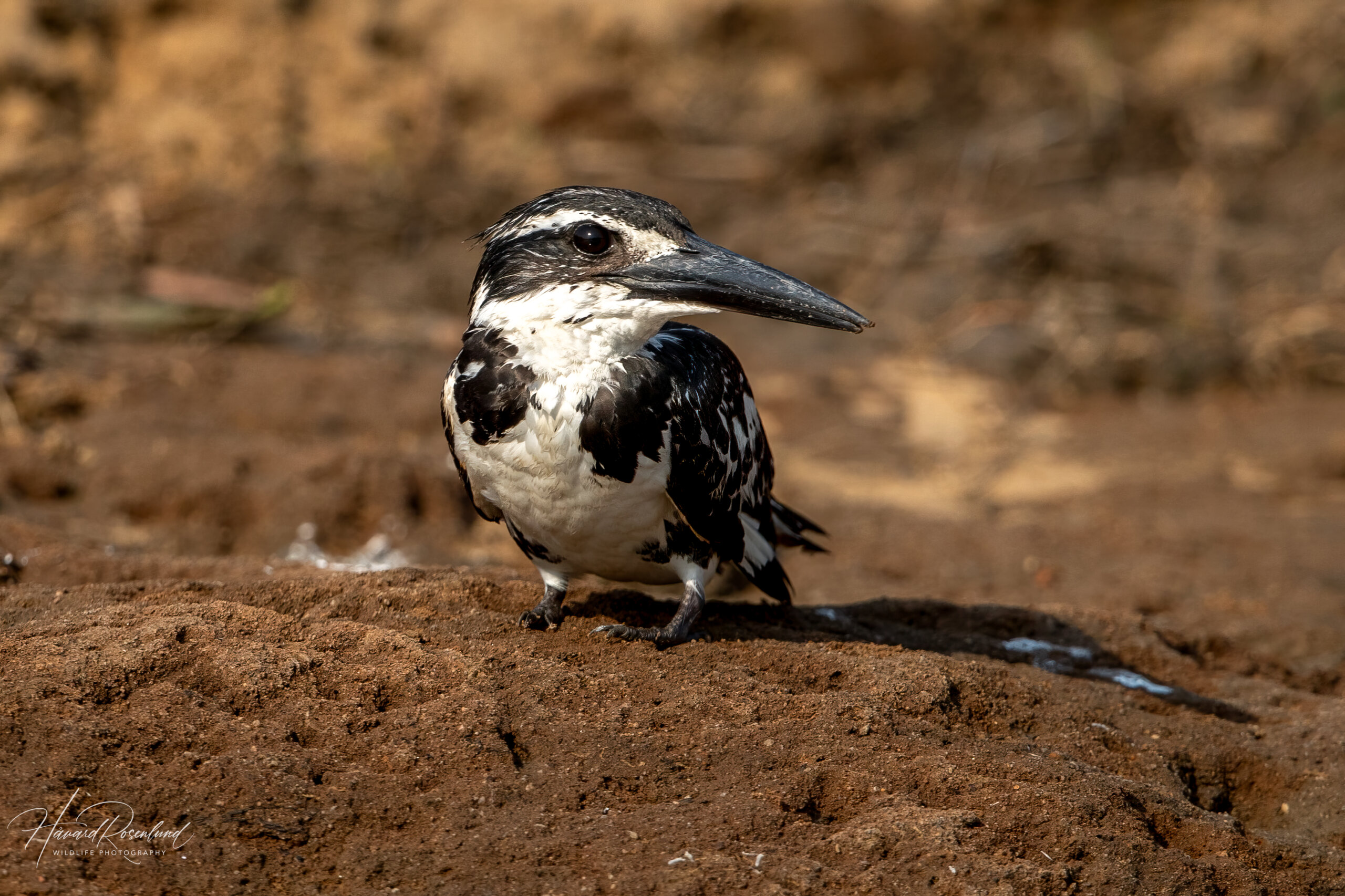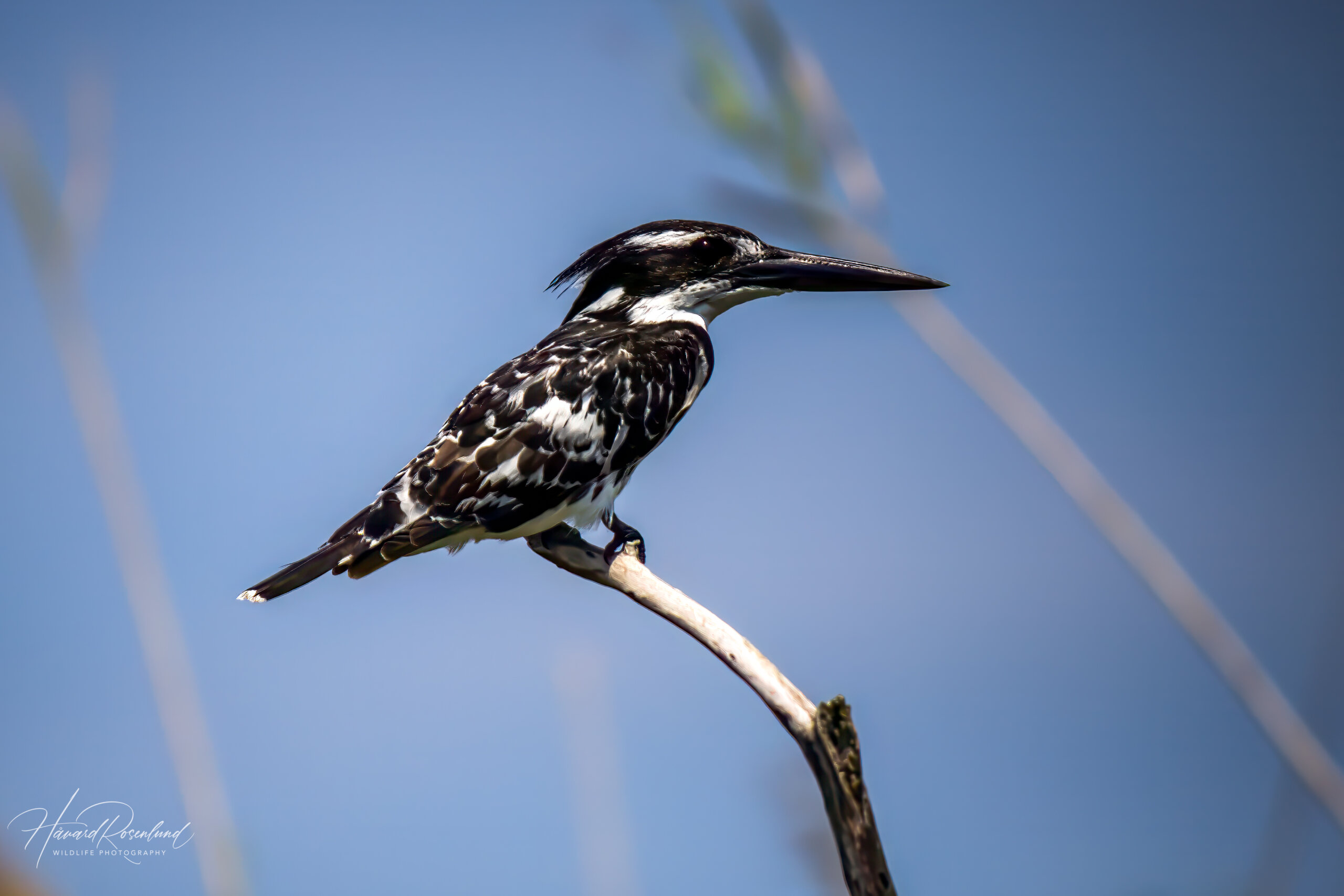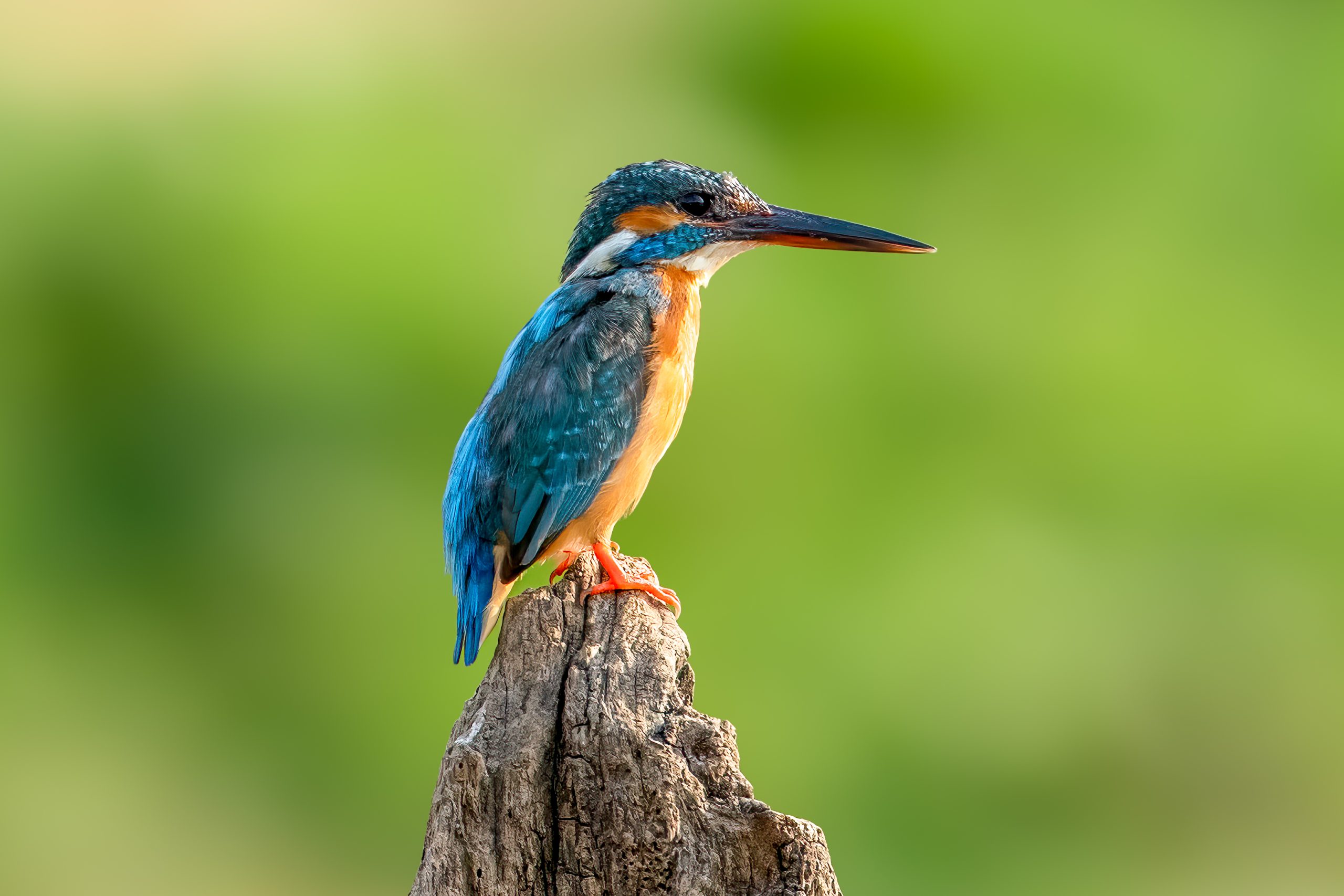Description
The pied kingfisher (Ceryle rudis) is a very common species of kingfisher with a widespread distribution in both Africa and Asia. It is the only species of kingfisher to have an exclusively black and white plumage. It is easily recognized perched close by the water or hovering still in the sky while scanning for prey in the water below. General characteristics include a crest on the head, mostly black with white on the back and head, a white throat and belly with black bands on the breast. Males have two bands across the breast while females have only one incomplete band. Length of the bird averages 17 cm (6.7 in).
Diet, habitat & flying
It is the heaviest bird mastering the art of true hovering. It can stay still at one spot while rapidly flapping its wings in the air for an extended period, as well as change position and altitude rapidly. It is so adept at flying and hovering that it can be seen as far as 3 km out on the open ocean hunting. Main diet is predominantly fish, with invertebrates and small amphibians caught and eaten less frequently. Smaller prey is caught and eaten in flight, whereas larger preys are brought back to land and killed before consumed. Because of its superior flying skills it does not need any specific habitat and will live at any water body with an adequate number of small fish.
Nesting
The pied kingfisher is a monogamous breeder. A breeding pair builds nests in vertical sandbanks by excavating a 1.2 m (47 in) tunnel with a 20-30 cm (8-12 in) wide nesting chamber at the end. They are cooperative breeders, and often year-old offspring help the breeding pair with incubation, caring for chicks, as well as defending the territory. Sometimes, often later in the breeding season, breeding pairs are helped by secondary helpers. These are adults that have themselves failed in raising their own young. They will also help in caring for chicks and defending the territory. Incubation of four to five eggs lasts for 18 days. The chicks will stay in the nest 24-29 days after hatching. They learn to hunt after reaching an age of 38-43 days.
Status
Pied kingfisher is often considered the third most common kingfisher in the world and with its widespread distribution there are no real threat to the population at large. It is listed as least concern on the IUCN Red List. Small local populations can be under threat due to poison from farmlands and other human commercial waterside practices. Creations of dams and fish farming have, however, benefited the population. It is listed as endangered within its limited distribution in Europe.











